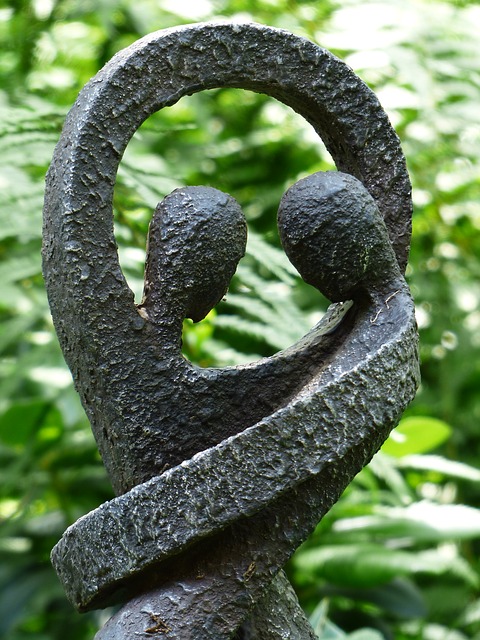 This is a guest post by Jonathan Jameson. Jonathan has been a professional musician for the last fifteen years, most notably in the band Delta Spirit, and is currently a student at Nashotah House Theological Seminary in Wisconsin, USA. He is exploring a call to the ministry in the Episcopal Church.
This is a guest post by Jonathan Jameson. Jonathan has been a professional musician for the last fifteen years, most notably in the band Delta Spirit, and is currently a student at Nashotah House Theological Seminary in Wisconsin, USA. He is exploring a call to the ministry in the Episcopal Church.
What is Beauty?
We live in a peculiar age. There is simultaneously a profound concern for others and a deep obsession with self. Our understanding of sex and personhood has been formed by this present paradox. The big conversation over ‘consent’ as a sexual ideal is understandable in our current climate where the American President-elect has brazenly bragged about violating women and shrugged it off as casual conversation, and where a Stanford University swimmer has drunkenly raped a female student and our justice system appears to be more concerned about his future than hers.
But despite the obvious importance of consent, the root of our problem is deeper than the lack thereof. In an age where our “heart” is the ultimate guide and our appetites are instantly gratified, how do we learn to love a person not just because of what they do for us, their beauty, or even how they make us feel, but in the mysterious otherness of who they are?
Song of Songs and Beauty
There is a s trange book in the Bible called the Song of Songs, where we don’t even find mention of God’s name. Instead, we find a collection of erotic love poems that vividly describe physical and sexual desire between lovers. There has been a temptation to “spiritualize” the Song in Christian history, as its overt sexuality was an embarrassment to some more prudish ages, but I would like to argue that it is precisely its unabashed physicality that can speak to our age—a physicality of beauty and awe and otherness with which we seem to have lost touch.
trange book in the Bible called the Song of Songs, where we don’t even find mention of God’s name. Instead, we find a collection of erotic love poems that vividly describe physical and sexual desire between lovers. There has been a temptation to “spiritualize” the Song in Christian history, as its overt sexuality was an embarrassment to some more prudish ages, but I would like to argue that it is precisely its unabashed physicality that can speak to our age—a physicality of beauty and awe and otherness with which we seem to have lost touch.
Set in a time that was even more deeply entrenched in abusive male dominance, the mutuality of love that we find described in the Song is particularly powerful. The famous phrase, “I am my beloved’s and my beloved is mine” (6:3), indicates a powerful sense of mutual self-surrender that is deeply counter-cultural in a patriarchal society. There is also an almost modern feel to the female lover’s line, “This is my beloved and this is my friend” (5:16). The “call and response” of the lovers found in chapters four, five, and seven are an example of a mutual pursuit of the other.
This pursuit is not out of lust or conquest, but the lovers’ response to a deep awe encountered in the profound otherness of the beloved. In his book Christianity and Eros, Philip Sherrard states,
In lust, it is the self that is the center of attraction, and the object which stimulates it is simply an object and nothing more. That is why lust dies when it is satisfied: it ends with self-gratification… In love, it is not the self but the object which is the center of attraction. One can go even further and say that the object of love ceases to be an object and becomes an ‘other,’ a particularized being, and it is this ‘other’ that is the center of attraction.[1]
Song of Songs enumerates this ‘otherness’ in the litanies of physical beauty and the poetic metaphors and similes used to describe them. The man praises his beloved’s eyes, lips, teeth, neck, breasts, feet, rounded thighs, belly, and nose using lofty, metaphoric imagery (largely lost on us moderns) like doves, a flock of goats, shorn ewes, and so on. Her whole body receives praise and admiration for its beauty. Likewise, the woman finds similar (and different) attributes to praise: head, eyes, cheeks, lips, arms, body, legs, appearance, and speech; comparing them to gold, alabaster columns, trees, etc. In these strange litanies there is a wholistic seeing of the other.
There is also a vivid and reoccurring theme of longing to “taste the fruits of the garden,” which while referring directly to lovemaking, also hints at a return to Eden, when man and woman were naked and unashamed. These profound acknowledgements of the ‘holy other,’ whose goodness exists independently, peel back objectifying lust to reveal a deeper well of wholistic sexuality.
Mutual Objectification
We live in an age confident in our “sexual enlightenment.” Yet many, sadly, continue to be treated as less than human. With the commodification of sex and the general view that pornography is normative and healthy, we substitute object for other. Pornography—which is hypothetically consensual, in its basest sense—and the objectifying culture that pervades our time—is the result of a reductionist ethic that turns consent from a basic moral obligation into an ideal, at the expense of authentic personhood. ‘Consensual objectification’ is a false substitute for a genuine reverence of the other as a child of God, holy and whole apart from our desires.
Creatures of the Borderlands
The idea that “everything is permissible as long as everyone is okay with it and no one gets physically hurt” is fine in a materialistic sense, but fails to account for the metaphysical reality in which we exist. Evelyn Underhill called humans “creatures of the borderlands.” The Gnostic tendencies in both the “spiritual but not religious” movement as well as certain Christian groups attempts to find our true worth as spirits opposed to bodies. In the face of this, sacramental Christianity proclaims boldly that you are a body and a soul. In abandoning the understanding that we are our bodies, humans generally fall into one of two categories: escapism, denying the goodness of creation; or libertinism, which has no guard against objectification. If we acknowledge our peculiar place in the universe as creatures of the borderlands—truly body and soul—we can begin to feel the weight of how we how we use our bodies and how we treat others’ bodies.
 My son is three and in pre-school. His teachers have taught him, when someone hits him or touches him in a way that he doesn’t like, to say, “don’t touch my body like that.” While this can lead to some funny looks when he says it to me (unnecessarily) in line at the grocery store, I think they are onto something in encouraging self-identity with the body, not just the emotions. What we do with our bodies and minds affects us. The way we see others both forms us and informs how we treat others. (This is true not only in sexual terms, but also in how we interpret race, class, gender, etc.) The canonical worth of this strange book, in its canticles of wholistic beauty and rightly ordered sexuality, is evident. The Song of Songs presents both our bodies and those of others as more than objects for self-gratification or domination. It instead recognizes their unique goodness and capacity for mutual self-surrender, always in the context of the whole person that God loves.
My son is three and in pre-school. His teachers have taught him, when someone hits him or touches him in a way that he doesn’t like, to say, “don’t touch my body like that.” While this can lead to some funny looks when he says it to me (unnecessarily) in line at the grocery store, I think they are onto something in encouraging self-identity with the body, not just the emotions. What we do with our bodies and minds affects us. The way we see others both forms us and informs how we treat others. (This is true not only in sexual terms, but also in how we interpret race, class, gender, etc.) The canonical worth of this strange book, in its canticles of wholistic beauty and rightly ordered sexuality, is evident. The Song of Songs presents both our bodies and those of others as more than objects for self-gratification or domination. It instead recognizes their unique goodness and capacity for mutual self-surrender, always in the context of the whole person that God loves.
[1] Sherrard, Christianity and Eros. 45,46.


